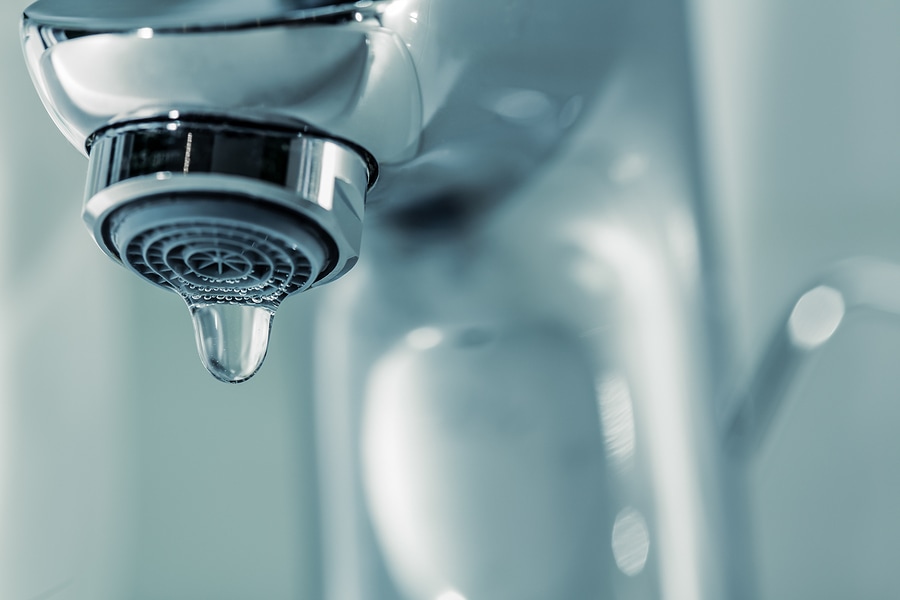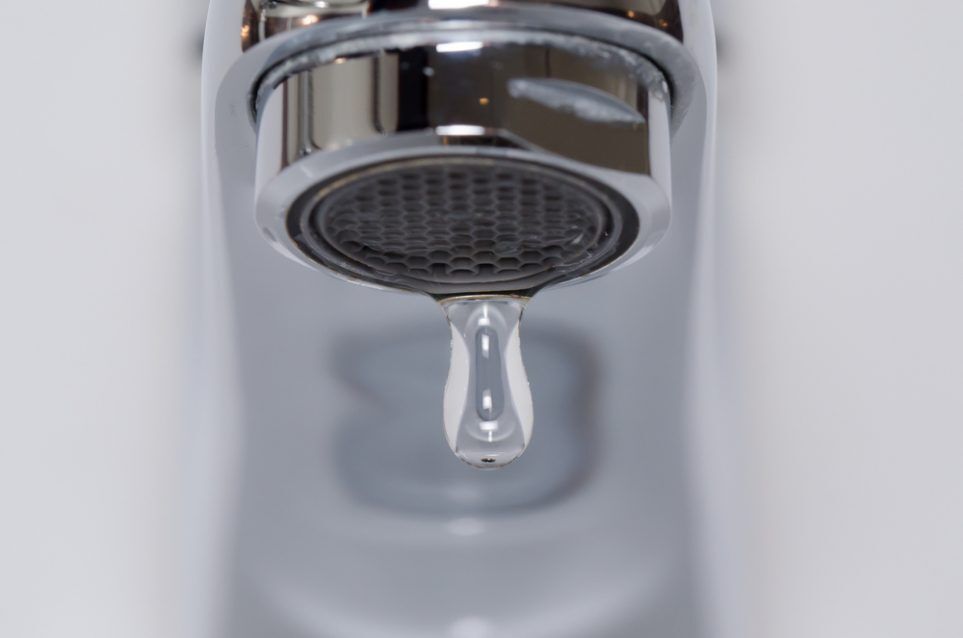What're your opinions on Why Are My Faucets Dripping (And Can I Fix It Myself)??

Trickling taps could seem like a minor inconvenience, but their influence exceeds simply the aggravation of the sound. From wasting water to sustaining unneeded economic prices and wellness risks, disregarding a leaking faucet can cause various repercussions. In this article, we'll delve into why it's essential to address this common household issue promptly and properly.
Wastefulness of Water
Ecological Effect
Leaking faucets add dramatically to water wastefulness. According to the Environmental Protection Agency (EPA), a solitary faucet leaking at one drip per second can lose greater than 3,000 gallons of water annually. This not only stress water resources yet additionally impacts ecosystems and wildlife dependent on them.
Financial Costs
Raised Water Bills
Past the environmental effect, trickling faucets can inflate water costs significantly. The built up waste with time equates into greater utility expenses, which could have been prevented with timely fixings.
Potential Home Damages
Furthermore, extended trickling can bring about damage to fixtures and surface areas bordering the tap. Water accumulation can trigger staining, rust, and also architectural concerns if left ignored, leading to extra repair service costs.
Health and wellness Worries
Mold And Mildew and Mold Growth
The continuous existence of wetness from a leaking faucet creates an optimal atmosphere for mold and mold development. These fungi not just endanger indoor air quality but additionally present health and wellness risks, particularly for people with breathing conditions or allergic reactions.
Waterborne Illness
Stagnant water in dripping taps can end up being a breeding ground for microorganisms and other virus, boosting the risk of waterborne illness. Contaminants such as Legionella germs thrive in stationary water, potentially leading to severe illnesses when ingested or breathed in.
DIY vs. Expert Fixing
Benefits and drawbacks of DIY Repair Work
While some might try to fix a leaking tap themselves, do it yourself repair work feature their very own set of challenges. Without appropriate understanding and devices, do it yourself attempts can aggravate the issue or bring about insufficient repair work, prolonging the problem.
Benefits of Working With a Professional Plumber
Hiring a specialist plumber makes certain that the underlying source of the leaking faucet is resolved successfully. Plumbing technicians possess the proficiency and equipment to identify and repair tap concerns effectively, saving time and decreasing the threat of additional damage.
Step-by-Step Overview to Repairing a Dripping Tap
Devices Required
Prior to attempting to repair a trickling faucet, collect the needed devices, including a flexible wrench, screwdrivers, replacement components (such as washers or cartridges), and plumber's tape.
Usual Faucet Issues and Their Solutions
Determine the type of faucet and the details issue creating the drip. Typical troubles include worn-out washing machines, rusty valve seats, or defective O-rings. Describe supplier instructions or on the internet tutorials for detailed advice on repairs.
Preventive Measures
Routine Maintenance Tips
To prevent leaking faucets, do regular upkeep such as cleansing aerators, evaluating for leakages, and changing damaged components promptly. Additionally, consider installing water-saving devices or upgrading to much more efficient fixtures.
Importance of Prompt Repairs
Addressing trickling taps as soon as they're discovered prevents more water wastefulness and prospective damage, inevitably conserving both water and cash in the long run.
Influence On Residential Or Commercial Property Worth
Understanding of Well-Maintained Residential Or Commercial Property
Keeping a property in good condition, consisting of addressing upkeep issues like leaking taps, improves its regarded value and charm amongst prospective purchasers or tenants.
Impact on Resale Value
Properties with properly maintained plumbing components, including faucets, command greater resale values in the realty market. Resolving trickling taps can contribute to a favorable impact during residential property assessments and arrangements.
Environmental Duty
Individual Payment to Preservation
Taking responsibility for taking care of trickling taps aligns with wider initiatives towards water preservation and environmental sustainability. Every individual's actions collectively make a substantial influence on preserving precious resources.
Sustainable Living Practices
By prioritizing timely fixings and taking on water-saving behaviors, people add to lasting living methods that benefit both present and future generations.
Conclusion
Addressing a dripping tap goes beyond plain ease; it's a crucial action toward preserving water, decreasing economic costs, and guarding health and wellness and home. Whether through do it yourself repairs or expert assistance, doing something about it to repair trickling faucets is a tiny yet impactful method to advertise responsible stewardship of sources and contribute to a healthier, extra sustainable future.
How to Fix a Leaky Faucet: Step-by-Step Repair Guide
A leaky faucet may seem like a simple annoyance, but if it's not fixed promptly, that leak could cost hundreds to potentially thousands. From water damage to mold, mildew, and high water bills, even a tiny leak can be catastrophic if left unattended. Damage like this can even affect the overall value of your home, so it's important to take the right approach for leaky faucet repair. You may need the help of a plumber in some cases, but we've got a few tips you can try on how to fix a leaky faucet before calling the pros.
Four Faucet Types
When you're learning how to fix a leaky faucet, the first step is knowing what kind of faucet you're working with! There are four common types.
Cartridge Faucets
Cartridge faucets come in one- or two-handled varieties. In one-handled cartridge faucets, hot and cold water combines in a single cartridge. In the two-handled versions, hot and cold water are controlled separately and mixed in the faucet.
Ball Faucets
Ball faucets have a single lever you push up and down to adjust the pressure and rotate to change the temperature. A slotted metal ball controls the amount of water allowed into the spout.
Compression Washer Faucets
They're the oldest type of faucet, but they're still used in many homes — especially older ones. Compression faucets have two separate handles that, when turned, raise or lower the washer that seals a water valve. This valve stops water from flowing through the faucet when it is turned off.
Disc Faucets
Disc faucets rarely need to be repaired due to their maintenance-free design. The water flow is controlled by two discs — the upper one raises and lowers against a fixed lower disc, creating a watertight seal. If your disc faucet starts leaking, you may need to replace the seals or clean residue buildup from the inlets.
Fixing a Leaky Faucet
Step 1: Turn Off the Water
Whether you're learning how to fix a leaky bathtub faucet or how to fix a leaky kitchen faucet, always turn off the water supply to your working area when you're fixing a leak. The last thing you want is a flood added to your list of things to fix.
Look for the shutoff valves below your sink or around the tub and turn them clockwise to stop the water flow. If your faucet doesn't have shutoff valves, you may need to turn off the water for the whole house. Check to make sure it's off by turning the faucet on. If nothing comes out, you're ready to start the repair.
Step 2: Take Apart the Faucet
How you disassemble your faucet depends on the type of fixture you have. You can use a flathead screwdriver to remove the caps on top of the handle or handles for cartridge and compression faucets. Inside, you should see handle screws. Unscrew these with a screwdriver to remove the handle.
Disc- and ball-style faucets will typically have an inlet screw near the handle, and removing that will reveal the interior of the faucet.
Detach the Valve Stem
For cartridge- and compression-style faucets, you'll see the inner valve stem or cartridge once you remove the faucet handles. If you have a compression faucet, unscrew the brass valve stem. If you have a cartridge faucet, pull out the cartridge. If your cartridge has been in place for a while, it may require some tools or extra force to remove it due to mineral deposits.
Examine and Replace Parts
Once you've removed the parts, check them out to confirm what needs to be replaced. You may see corroded rubber washers, O-rings, stems, or cartridges. On a ball-style faucet, check the seats and springs for damage.
If you need to repair a leaky disc faucet, check the inlet and seals on the lower disc.
Once you determine what parts must be replaced, visit your local hardware store. Bring the damaged parts with you to ensure you can purchase the correct components to replace them.
Clean Valves and Faucet Cavity
If you've removed a stem or cartridge, you may notice mineral buildup in the faucet's threads. Use white vinegar to clean the valve seat by soaking it for a few minutes, then scrub it away with a soft toothbrush and rinse with warm water. You can also clean the interior of the faucet in the same way.
Reassemble the Faucet
Once your faucet is cleaned and the required parts have been replaced, it's time to reassemble it. Put the pieces back together and slowly turn the water supply back on. Doing this slowly is crucial because too much initial water pressure can damage the new hardware you've just installed.
https://homewarranty.firstam.com/blog/how-to-fix-leaky-faucet

As an avid reader on , I was thinking sharing that piece of content was really helpful. Are you aware of anybody else who is excited by the subject? Take a moment to share it. Thank-you for your time invested reading it.